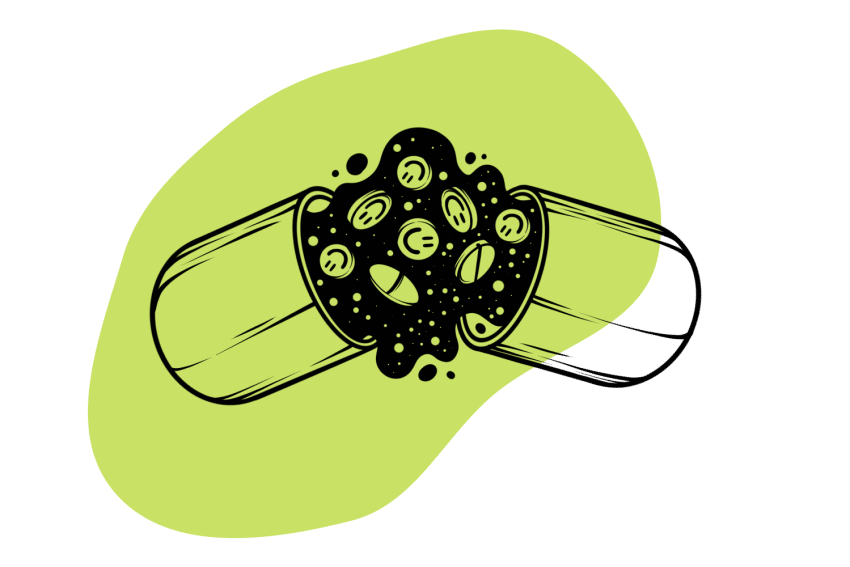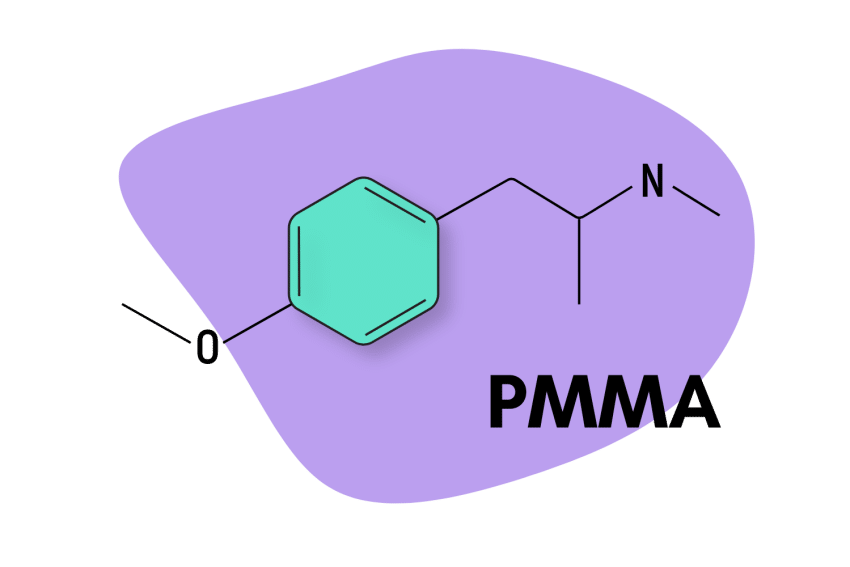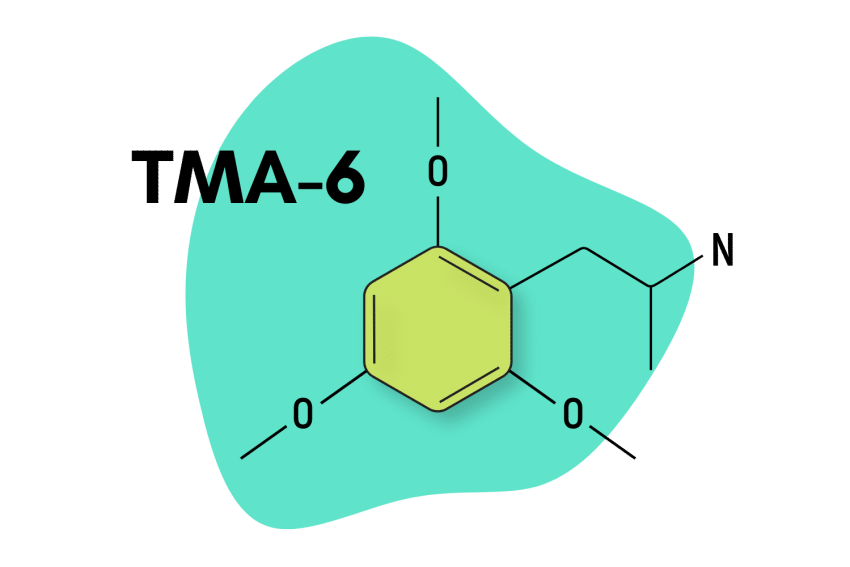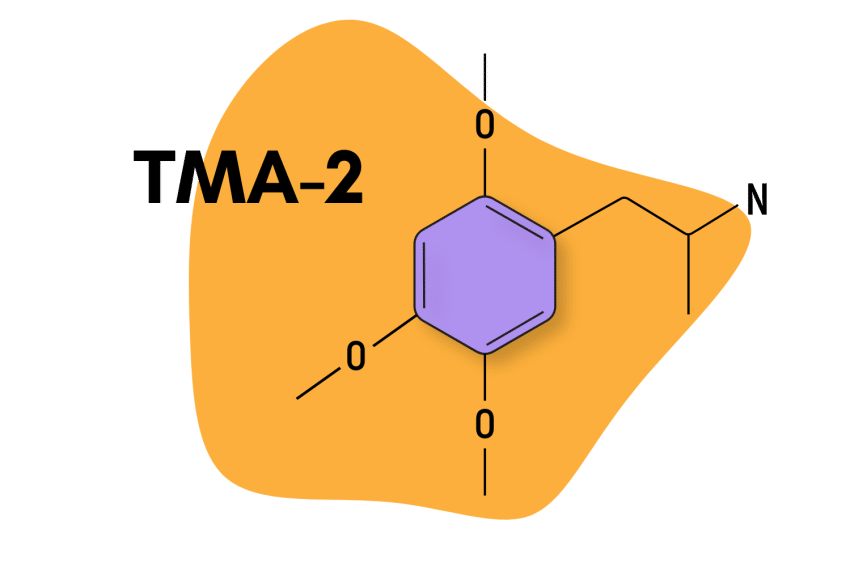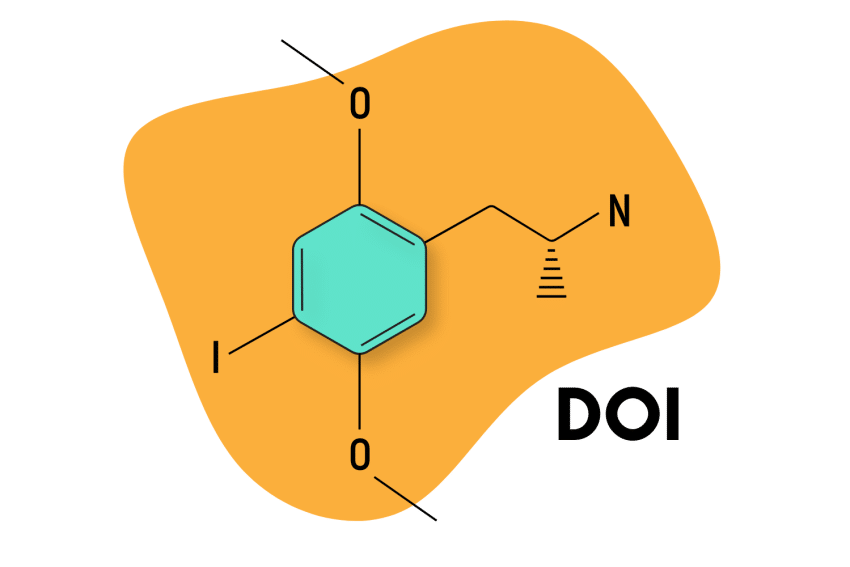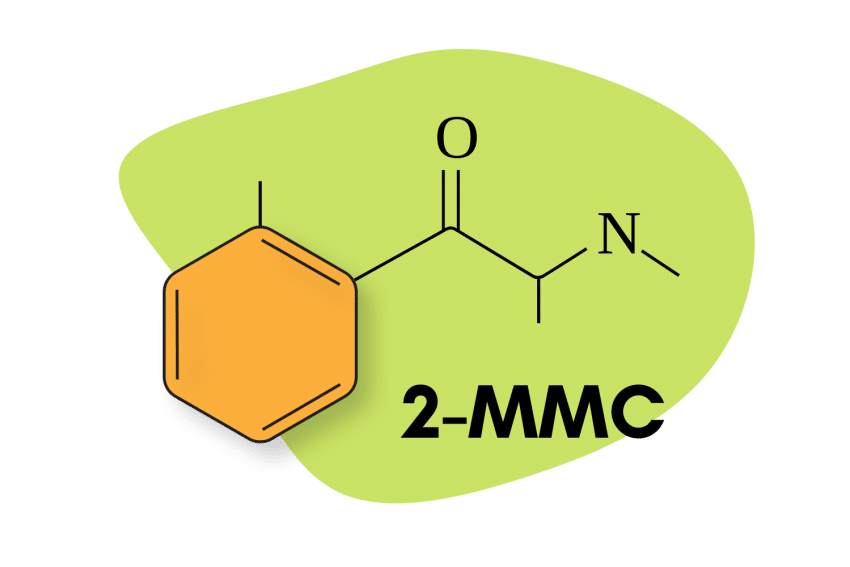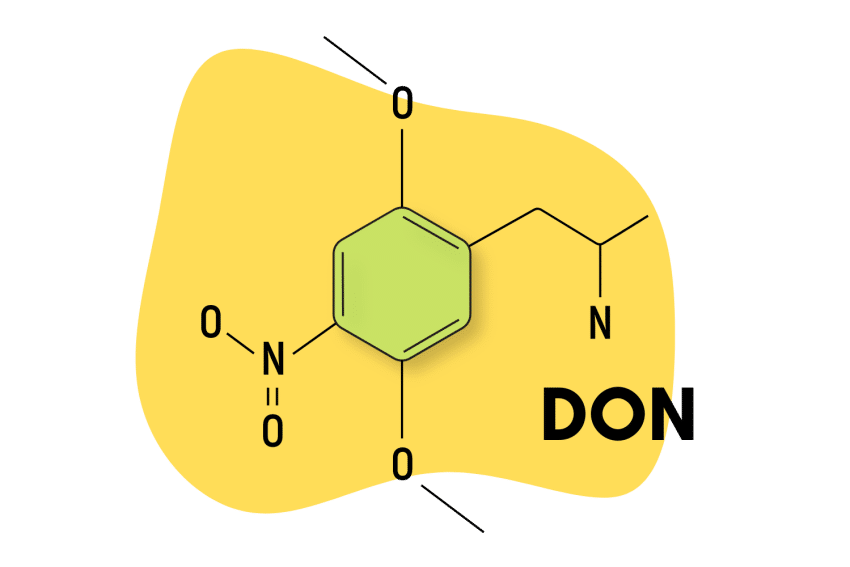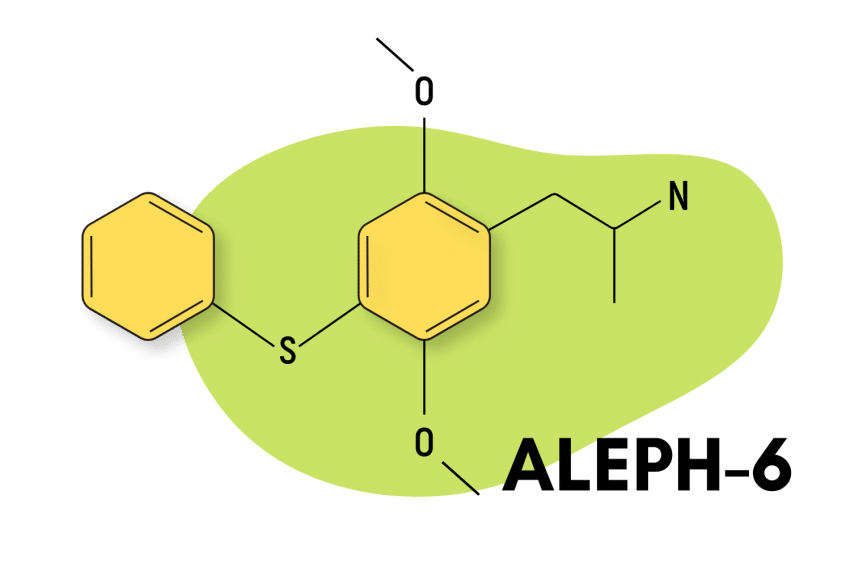A Closer Look at 4-MC: What We Know So Far
An exploration into one of the most obscure members of the psychedelic amphetamines around.
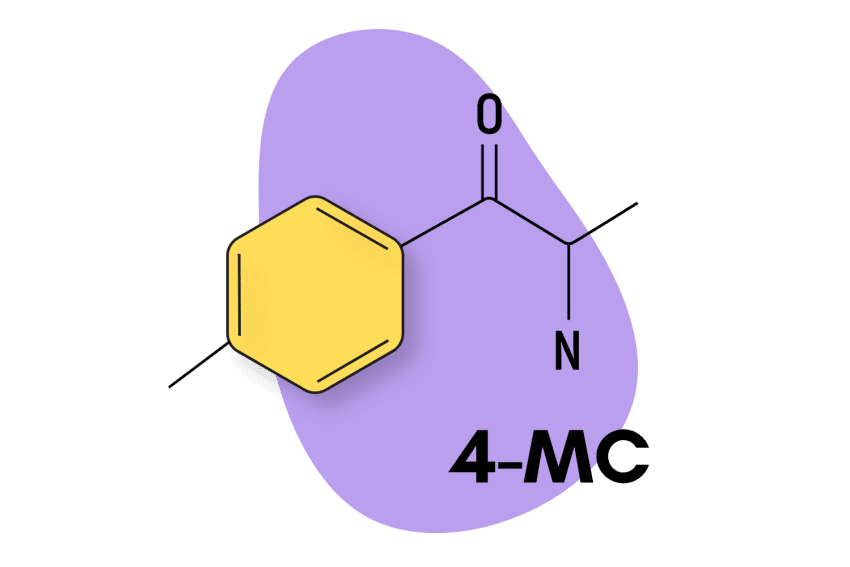
What Is 4-MC?
4-Methylcathinone, also known as Nor-Mephedrone, NSC-60487, and 4-MC, is a synthetic cathinone amphetamine.
Due to their immense potency and strong stimulant effects, synthetic cathinones, often referred to as “bath salts,” carry a significant amount of risk compared to other conventional stimulants like MDMA, methamphetamine, or cocaine.
4-MC is a metabolite of mephedrone (4-MMC), a far more popular member of the designer drug space.
Regrettably, there is comparatively much fewer data for 4-MC than for its parent compound. However, there are some assumptions we can make about it, along with a selection of trip reports to decipher.
4-MC Specs
| Chemical Name | 4-Methylcathinone |
| Level of Risk | High |
| Other Names | Nor-Mephedrone, NSC-60487, and 4-MC |
| Most Common Side Effects | Anxiety, Overstimulation, Tachycardia |
| Duration of Effects | Unknown |
| Estimated Threshold Dose | Unknown |
| Common Dose | Unknown |
| Legality/Status | Research Chemical |
| PubChem ID: | 414532 |
| CAS# | 31952-47-3 |
Tripsitter Safe 4-MC Guidelines
- 🐍 I understand why psychedelics should be treated with respect
- ⚖️ I’m familiar with the laws for 4-MC in my country & state
- 🍄 I understand the risks that come with substances that lack clear dosage guidelines
- 🧪 I’ve tested a sample of the substance I’m using with a drug-testing kit
- 💊 I’m not mixing any medications or other substances with 4-MC
- 🏔 I’m in a safe & comfortable environment with people I trust
- 🐺 One of the members of my group is responsible and sober (AKA a trip sitter)
- ⏳ I have nothing important scheduled for after the trip
- 🧠 I’m in a sound & healthy state of mind
- ❤️ I don’t have any underlying health issues — don’t take 4-MC if you have underlying heart, neurological, or psychiatric disorders
- 👭 Use the buddy system — 4-MC can remove your inhibition and allow you to make unsafe decisions, always stay with people you trust, and never go out alone
- 🌵 I understand the risk of dehydration — it’s easy to become dehydrated on 4-MC, so make sure you’re drinking a cup of water every hour while using molly
- 🦻 Protect your hearing — music can be intoxicating while on 4-MC, but protect your hearing and bring ear protection before you go out to a club or concert
How Does 4-MC Work?
Due to a lack of studies on 4-MC, we have to rely on the research for its parent compound, mephedrone, and assume that these compounds hold significant pharmacological similarities.
Mephedrone exerts its effects on the body through two primary means [1]:
- The promotion of the transporter-mediated release of monoamine neurotransmitters such as dopamine
- The inhibition of the reuptake process of said neurotransmitters
These pathways increase the level of active neurotransmitters in the synaptic cleft, thus potentiating the bodily responses associated with said neurotransmitters.
Besides the specific mechanisms by which substituted amphetamines interact with neurotransmitters, the other crucial factor that largely determines their effects is the specific neurotransmitters being mediated.
In this case, mephedrone (and likely 4-MC) appears to be a non-selective amphetamine since it has some action with all three major neurotransmitters: dopamine, norepinephrine, and serotonin.
However, the activity level between these different neurotransmitters is not the same.
Mephedrone has roughly 50 times more affinity for promoting the release of dopamine than serotonin [2]. This equates to a much higher stimulatory effect profile than serotonergic-focused drugs.
What Are the Effects of 4-MC?
Most reports of 4-MC online suggest this compound is much weaker than its parent, 4-MMC, but maintains similar empathogenic and stimulating effects when used at the correct dose. The effects are somewhat comparable to those of MDMA but with less empathogenic action and more of a cocaine-like stimulation.
The physical effects of 4-MC and 4-MMC are as follows:
- Stimulation
- Spontaneous physical sensations
- Physical euphoria
- Vibrating vision
- Dehydration
- Difficulty urinating
- Vasoconstriction
- Tactile enhancement
- Increased heart rate
- Increased perspiration
- Increased blood pressure
- Body odor alteration
- Teeth grinding
Cognitive effects include:
- Cognitive euphoria
- Thought acceleration
- Increased music appreciation
- Ego inflation
- Disinhibition
- Empathy
- Sociability enhancement
- Time distortion
- Motivation enhancement
- Anxiety suppression
- Compulsive redosing
- Increased libido
- Wakefulness
People often report the following after-effects:
- Anxiety
- Cognitive fatigue
- Depression
- Irritability
- Suppressed motivation
- Thought deceleration
- Wakefulness
Is 4-MC Addictive?
Yes, 4-MC is likely addictive if used too often.
The continued use of amphetamines, especially potent subtypes like cathinones, has been linked with psychological and physical dependence. There are no studies comparing the addictive potential of 4-MC versus other psychoactive chemicals, but this substance likely has a similarly addictive nature.
The formation of tolerance to amphetamines is well-documented, but it is not long-lasting. Studies have shown that it only takes about three to seven days of discontinuation for users to halve their tolerances and roughly two weeks to return to their “baseline” tolerance levels.
It’s worth noting that dopamine-related activity is more likely to be addictive than serotonin-related activity [1]. For example, drugs like cocaine and methamphetamine, which primarily affect dopamine, have a higher likelihood of causing both psychological and physical dependence than drugs like MDMA, which primarily affect serotonin.
However, the relative potency of a drug’s dopamine activity also plays a role. In extremely potent compounds like cathinones, serotonin activity does not necessarily mean that a drug like 4-MC has less addiction potential than cocaine.
In general, the medical community recognizes that amphetamines are less likely to cause dependence than depressant compounds like opioids, benzodiazepines, and alcohol. Depressant compounds have a greater potential to produce physical dependence, which is why they often produce withdrawal symptoms.
While amphetamines do have the potential to cause physical dependence, their addiction mechanism appears to be more related to brain chemistry and behavior. In other words, addiction comes from the feelings of pleasure and reward associated with amphetamine use rather than the pharmacology of the drug itself.
Is 4-MC Safe? Risks & Side Effects
The safety profile of 4-MC is unclear due to the lack of both formal and informal testing.
In general, the increased potency of cathinones, like 4-MC, makes them relatively more dangerous than other popular amphetamines such as methamphetamine or MDPV and other stimulants like cocaine.
A slight dosage miscalculation can put a user at considerable risk.
The presence of additional risk factors associated with illicit drug use, such as polydrug abuse, adulteration, and compulsive redosing, is also a cause for concern.
The most dangerous effects of cathinones are related to their dopaminergic and stimulant properties. Amphetamine stimulants, such as cathinones, can cause cardiovascular-related side effects, such as tachycardia and elevated blood pressure. Although these effects are usually not severe, the possibility of a serious heart condition, such as cardiac arrest, cannot be ruled out.
The abuse of stimulant drugs can also lead to cognitive dangers such as psychosis and anxiety.
There are also risks associated with the serotonergic properties of cathinones. Strong serotonergic drugs can lead to hyperthermia, tachycardia, and dehydration. These effects can sometimes become fatal.
Additionally, the after-effects of serotonergic drugs can be unpleasant, causing issues like depression and cognitive fatigue, which can last for several days.
Harm Reduction Tips: 4-MC
There is no recognized medical use for synthetic cathinones like 4-MC, which means they are exclusively linked to recreational use. In these contexts, implementing harm-reduction techniques is even more pressing.
Harm reduction, as opposed to traditional recreational drug treatment, does not emphasize the cessation of drug use as a benchmark for a successful intervention.
On the other hand, harm reduction focuses on replacing dangerous behaviors with choices that are less likely to cause long-term harm or death.
A good harm-reduction approach is therapeutic and educational, providing drug users with the necessary skills and knowledge to minimize risks.
Here are simple but effective harm-reduction techniques you can implement no matter the drug:
1. Watch Out for High-Potency Substances
High-potency drugs will always present more of an acute intoxication risk. With these types of substances, it’s easier for users to miscalculate and go from “dangerous but still okay” territory into “overdose” quantities.
Recreational drug users should exercise caution when planning out their intended doses.
Additionally, consuming a drug of unknown origin and potency is never a good idea.
It’s important to note that 4-MC doesn’t have an established dosage range but is considered a lower-potency cathinone.
2. Stick to One Substance
Statistics on drug-related fatalities are quite clear: the vast majority result from polydrug use.
Mixing two potent compounds like cocaine and heroin is a surefire way to increase the risks unnecessarily.
Having a couple of beers or some cigarettes is not nearly as dangerous as long as one doesn’t overdo it. But when it comes to potent substances like synthetic cathinones, users shouldn’t do more than one at a time.
3. Test Your Drugs
There is never a guarantee for purity when dealing with unregulated compounds — test a small sample first, so you know what you’re working with.
In the case of certain substances like cocaine, it’s almost impossible to receive a batch that has not been cut with an adulterant.
More recently, the introduction of fentanyl as a common cutting substance has led to thousands of opioid deaths.
Users need to hedge against this risk, which is why we recommend using reagent test kits. These test kits are relatively affordable and provide material for hundreds of tests. They can’t protect against all adulterants, but they can certainly rule out the most dangerous offenders.
References
- Green, A. R., King, M. V., Shortall, S. E., & Fone, K. C. F. (2014). The preclinical pharmacology of mephedrone; not just MDMA by another name. British journal of pharmacology, 171(9), 2251-2268.
- Hutsell, B. A., Baumann, M. H., Partilla, J. S., Banks, M. L., Vekariya, R., Glennon, R. A., & Negus, S. S. (2016). Abuse-related neurochemical and behavioral effects of cathinone and 4-methylcathinone stereoisomers in rats. European Neuropsychopharmacology, 26(2), 288-297.

